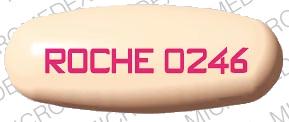Fortovase and Alcohol/Food Interactions
There are 2 alcohol/food/lifestyle interactions with Fortovase (saquinavir).
Saquinavir Food/Lifestyle
Moderate Food Interaction
Food can enhance the levels of saquinavir in your body. Saquinavir should be taken with meals or within 2 hours after eating. This will make it easier for your body to absorb the medication. Grapefruit can raise the levels of saquinavir in your body. Discuss the use of grapefruit products with your doctor. Do not increase or decrease the amount of grapefruit products in your diet without first talking to your doctor.
Switch to professional interaction data
Saquinavir High Cholesterol (Hyperlipoproteinemia, Hypertriglyceridemia, Sitosterolemia)
Moderate Potential Hazard, Moderate plausibility
PIs - hyperlipidemia
Treatment with ritonavir alone or in combination with other protease inhibitors (e.g., lopinavir, saquinavir, tipranavir, fosamprenavir) has resulted in substantial increases in the concentration of total cholesterol and triglycerides. These effects have also been reported with other protease inhibitors but may be the most dramatic with ritonavir. The clinical significance of these elevations is unclear. Marked elevation in triglyceride levels is a risk factor for development of pancreatitis. Triglyceride and cholesterol testing is recommended before starting ritonavir (with or without other protease inhibitors) and periodically during therapy. Lipid disorders should be managed as clinically appropriate.
Switch to professional interaction data
Fortovase drug interactions
There are 731 drug interactions with Fortovase (saquinavir).
Fortovase disease interactions
There are 6 disease interactions with Fortovase (saquinavir) which include:
More about Fortovase (saquinavir)
- Check interactions
- Compare alternatives
- Drug images
- Side effects
- Dosage information
- During pregnancy
- Drug class: protease inhibitors
- Breastfeeding
Related treatment guides
Drug Interaction Classification
| Highly clinically significant. Avoid combinations; the risk of the interaction outweighs the benefit. | |
| Moderately clinically significant. Usually avoid combinations; use it only under special circumstances. | |
| Minimally clinically significant. Minimize risk; assess risk and consider an alternative drug, take steps to circumvent the interaction risk and/or institute a monitoring plan. | |
| No interaction information available. |
See also:
Further information
Always consult your healthcare provider to ensure the information displayed on this page applies to your personal circumstances.


